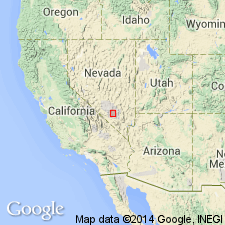
- Usage in publication:
-
- Rainier Mesa member*
- Modifications:
-
- Named
- Dominant lithology:
-
- Tuff
- AAPG geologic province:
-
- Great Basin province
Summary:
Named as the upper member (of 8 members) of Oak Spring formation for Rainier Mesa in the northern part of the Nevada Test Site, Nye Co, NV in the Great Basin province. May overlie Tiva Canyon Member (new) or Survey Butte Member (new), both members of Oak Spring. Lower contact gradational at Rainier Mesa; lower contact becomes unconformable to south. No overlying unit shown on cross section. No type locality designated. Consists of gray and reddish-brown welded tuff with marked eutaxitic structure. Has subordinate amounts of black vitrophyre. Has white, pink, tan nonwelded tuff at base. In southeast part of Test Site, member is partly welded and glassy. Phenocrysts of sanidine, anorthoclase, quartz, plagioclase, biotite, and other mafic minerals make up 10 to 30 percent of the rock. Forms cliffs, steep slopes, and conical-shaped exposures. Is more than 665 ft thick. Thickest section is about 1 mi north of Survey Butte. Exposed on Pahute Mesa, south of Lookout Peak, and east to Nye Canyon. Of Miocene? or younger age.
Source: GNU records (USGS DDS-6; Denver GNULEX).
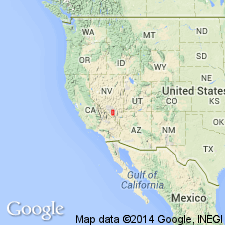
- Usage in publication:
-
- Rainier Mesa Member*
- Modifications:
-
- Revised
- AAPG geologic province:
-
- Great Basin province
Summary:
Recognized in the Nevada Test Site, Nye Co, NV in the Great Basin province. Revised from Rainer Mesa Member of Oak Spring Formation to Rainier Mesa Member of Piapi Canyon Formation (new), upper formation of Oak Spring Group. Overlies (cross section) from Oak Spring Butte (north) to Skull Mountain (south) successively the Survey Butte Member, Tiva Canyon Member, Topopah Spring Member of Piapi Canyon. The Survey Butte, Tiva Canyon, Topopah Spring are also newly reassigned to Piapi Canyon from Oak Spring Formation. Underlies basalt of Skull Mountain at Skull Mountain. At other localities shown, Rainier Mesa is the youngest unit exposed. Is a multiple-flow simple or compound cooling unit of rhyolitic welded and nonwelded ash-flow tuff and associated ash-fall tuff. Thought to be derived from Timber Mountain area to west. Of early Pliocene or younger age.
Source: GNU records (USGS DDS-6; Denver GNULEX).
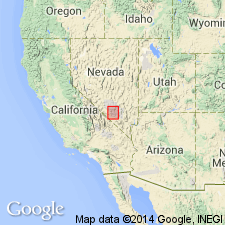
- Usage in publication:
-
- Rainier Mesa Member*
- Modifications:
-
- Revised
- AAPG geologic province:
-
- Great Basin province
Summary:
Three cooling units of Rainier Mesa Member are shown in measured section of Piapi Canyon Formation in Spring Canyon, Nevada Test Site. Petrographic examination of Tiva Canyon Member (Piapi Canyon Formation) at Jackass Divide, Four Corners Butte, Yucca Pass, Massachusetts Mountain, French Peak, and Scarp Canyon show that this unit has characteristics of lowest cooling unit of Rainier Mesa Member, and therefore these strata belong to Rainier Mesa Member.
Source: GNU records (USGS DDS-6; Menlo GNULEX).
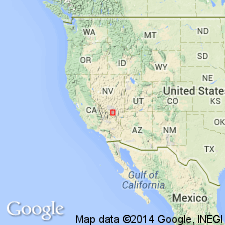
- Usage in publication:
-
- Rainier Mesa Member*
- Modifications:
-
- Revised
- Overview
- AAPG geologic province:
-
- Great Basin province
Summary:
Reassigned from upper member of Piapi Canyon Formation of Oak Spring Group to lower member of Timber Mountain Tuff (new) of Piapi Canyon Group (rank raised). Term Oak Spring Group abandoned. Is recognized over a large area in the Nevada Test Site and vicinity, Nye Co, NV in the Great Basin province where it overlies bedded tuff of the Paintbrush Tuff (new) of the Piapi Canyon Group. Underlies tuff of Cat Canyon of Timber Mountain Tuff in the western and northern part of the Test Site. Underlies Ammonia Tanks Member (new) of Timber Mountain Tuff in the Frenchman Flat and Yucca Flat areas. Cross section. Considered to be a compound cooling unit of rhyolitic to quartz latitic ash-flow tuff. Has abundant phenocrysts. Mafic minerals most abundant in upper or quartz latite part. Of Pliocene age.
Source: GNU records (USGS DDS-6; Denver GNULEX).
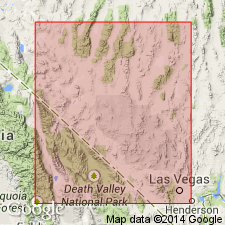
- Usage in publication:
-
- Rainier Mesa Member*
- Modifications:
-
- Geochronologic dating
- AAPG geologic province:
-
- Great Basin province
Summary:
K-Ar determination on sanidine from Rainier Mesa Member of Timber Mountain Tuff yielded age of 10.4 Ma. Sketch map shows locality for sample.
Source: GNU records (USGS DDS-6; Menlo GNULEX).
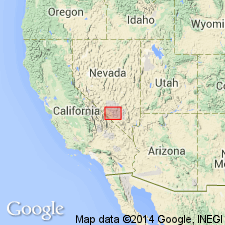
- Usage in publication:
-
- Rainier Mesa Member*
- Modifications:
-
- Areal extent
- Overview
- AAPG geologic province:
-
- Great Basin province
Summary:
Isopach map shows distribution of Rainier Mesa Member, lower member of Timber Mountain Tuff, in northwest Clark, southwest Lincoln, and southern Nye Cos, NV and eastern Inyo Co, CA in Great Basin province. The member is more than 500 m thick in Bullfrog Hills area and in Oasis valley caldera segment. Its source caldera is the Timber Mountain caldera. Considered to be a compositionally zoned compound cooling unit consisting of extensive silica rhyolite tuff overlain with a partial cooling break by quartz latitic tuff that is restricted to the vicinity of Timber Mountain caldera. Has a unique petrography that distinguishes it from other cooling units in Timber Mountain and in underlying Paintbrush Tuff. Averages 77 percent silica. The rhyolite is crystal rich and contains quartz. Divided into high silica rhyolite, extracaldera quartz latite, and intracaldera quartz latite. Has a K-Ar age of 11.1 m.y. and reverse thermal remanent magnetization. Underlies bedded tuff of Timber Mountain Tuff. Stratigraphic table. Modal analyses.
Source: GNU records (USGS DDS-6; Denver GNULEX).
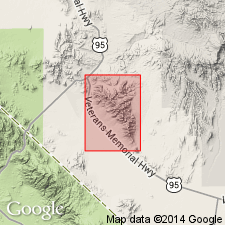
- Usage in publication:
-
- Rainier Mesa Member*
- Modifications:
-
- Age modified
- AAPG geologic province:
-
- Great Basin province
Summary:
Age of Rainier Mesa Member of Timber Mountain Tuff in report area [Bare Mountain, Nye Co, NV] revised from Miocene to: middle Miocene based on age revision of the Timber Mountain Tuff, locally.
Source: GNU records (USGS DDS-6; Menlo GNULEX).
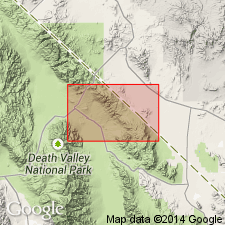
- Usage in publication:
-
- Rainier Mesa Member*
- Modifications:
-
- Areal extent
- AAPG geologic province:
-
- Great Basin province
Summary:
Unit geographically extended into report area [hilly area adjacent to east flank of northern Funeral Mountains, Inyo Co, CA]. Age given as Miocene.
Source: GNU records (USGS DDS-6; Menlo GNULEX).
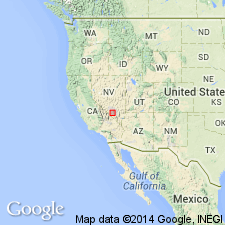
- Usage in publication:
-
- Rainier Mesa Tuff*
- Modifications:
-
- Revised
- Geochronologic dating
- AAPG geologic province:
-
- Great Basin province
Summary:
Within southwest Nevada volcanic field, Nye Co, NV, Great Basin province, units previously of formation rank are raised to group rank to allow for combining petrographically, geochemically, and temporally related lava flows and nonwelded tuffs with the principal correlative welded ash-flow tuff sheets (formerly members of the previous formation-rank tuffs). The ash-flow sheets are raised to formation rank and designated as "Tuff." Rainier Mesa is lower of two formally named formations of Timber Mountain Group (rank raised). [Timber Mountain also consists of informal units not discussed in this report.] Older than Ammonia Tanks Tuff (rank raised) of Timber Mountain; younger than Tiva Canyon Tuff of Paintbrush Group (rank raised for both units). Nomenclature shown on table 1. 40Ar/39Ar dates on average of 3 sanidine samples yielded age of 11.6 +/-0.03 Ma (Miocene).
Source: GNU records (USGS DDS-6; Denver GNULEX).
For more information, please contact Nancy Stamm, Geologic Names Committee Secretary.
Asterisk (*) indicates published by U.S. Geological Survey authors.
"No current usage" (†) implies that a name has been abandoned or has fallen into disuse. Former usage and, if known, replacement name given in parentheses ( ).
Slash (/) indicates name conflicts with nomenclatural guidelines (CSN, 1933; ACSN, 1961, 1970; NACSN, 1983, 2005, 2021). May be explained within brackets ([ ]).

